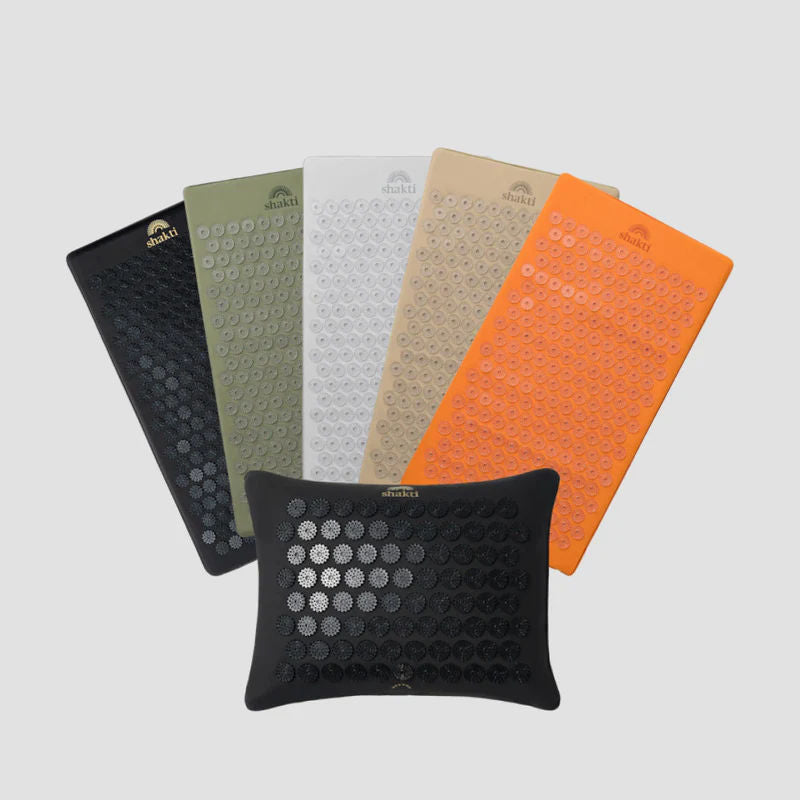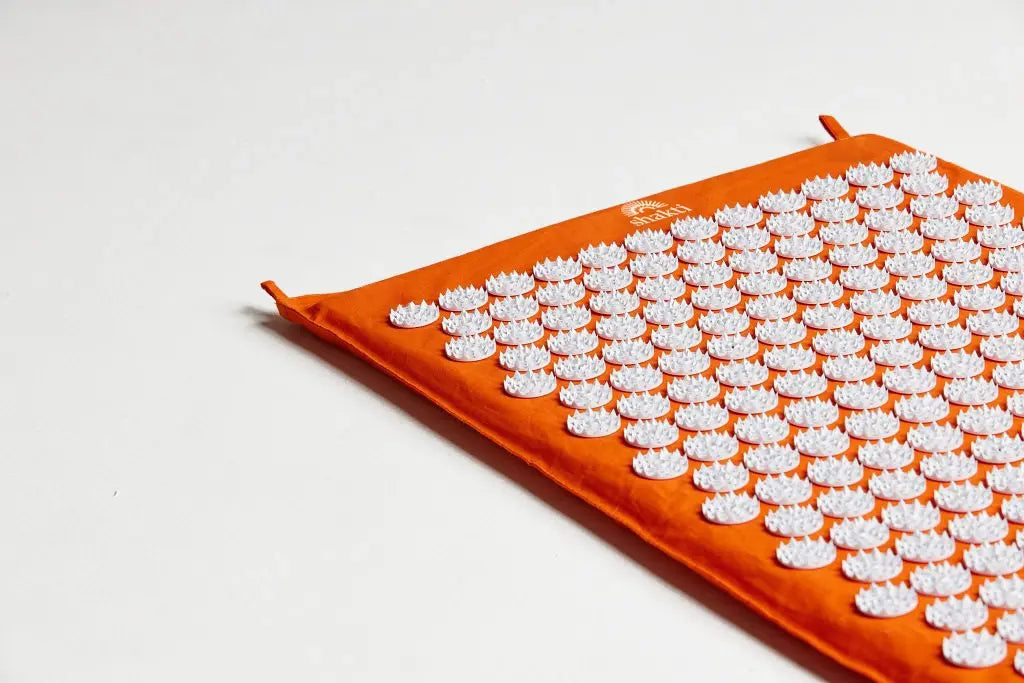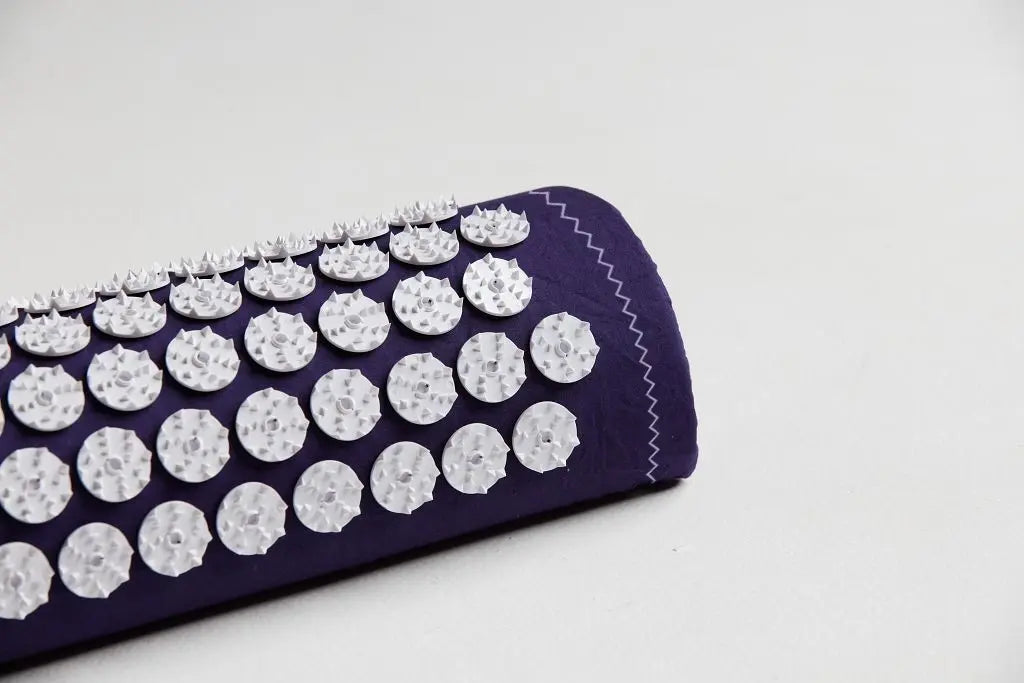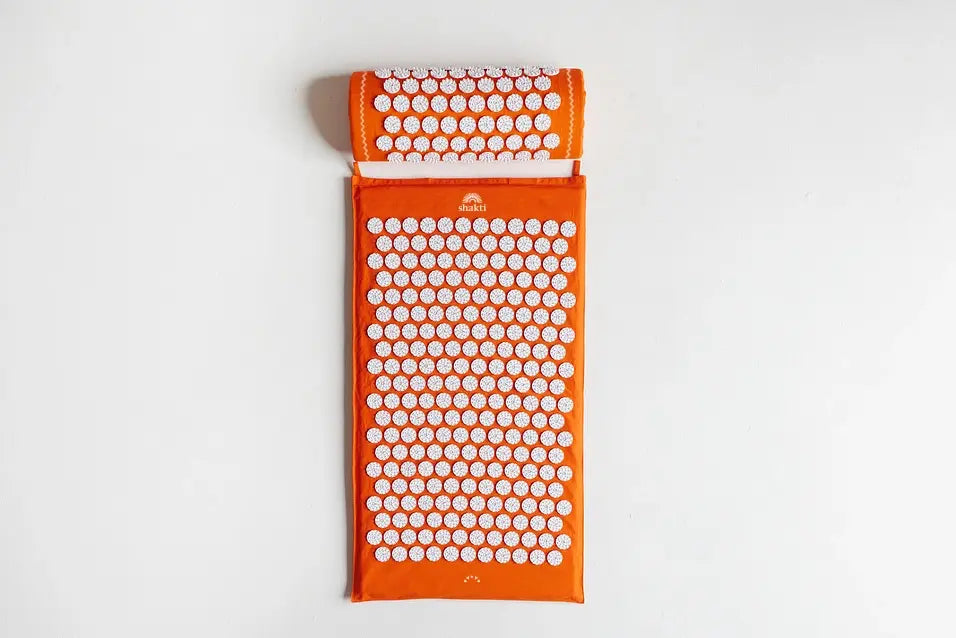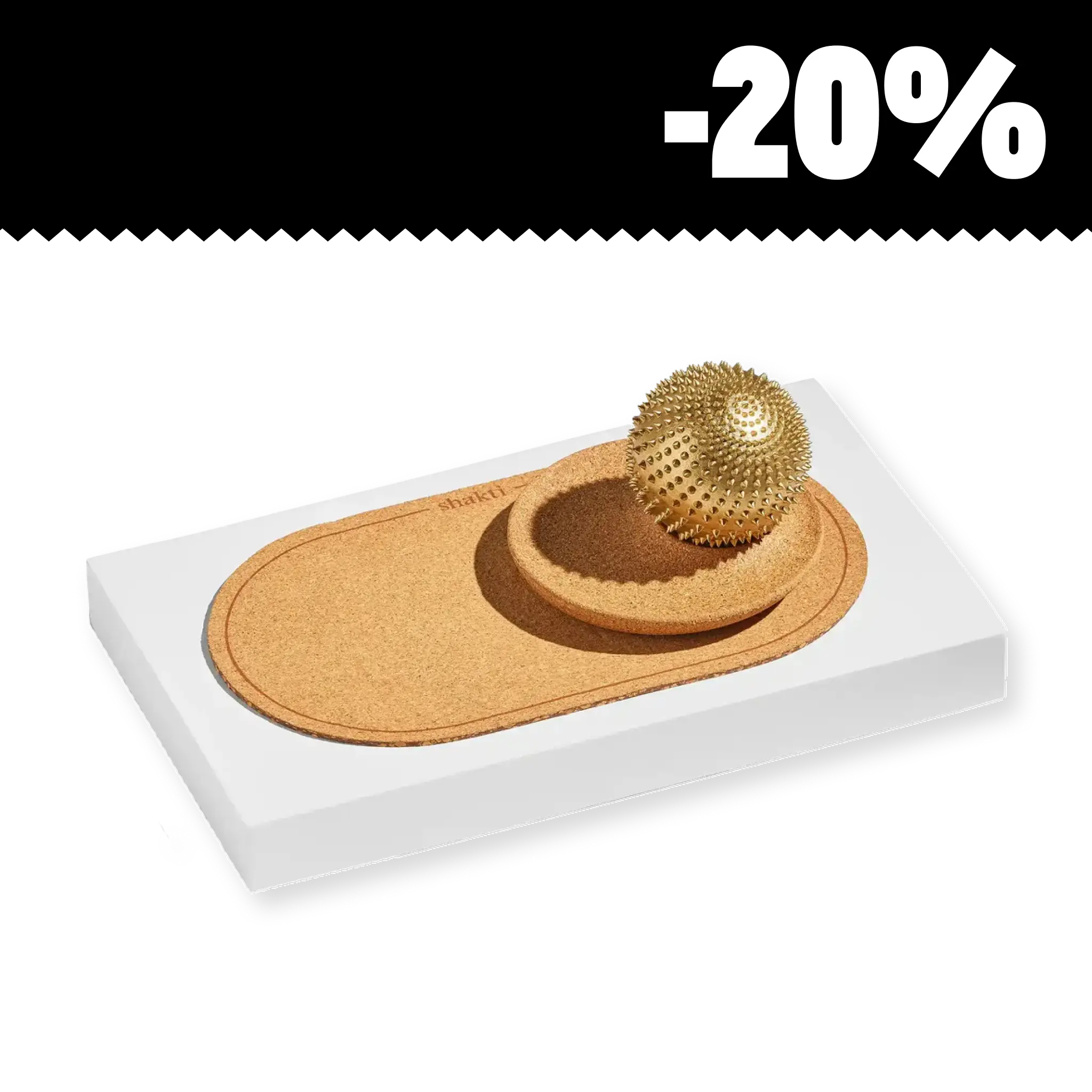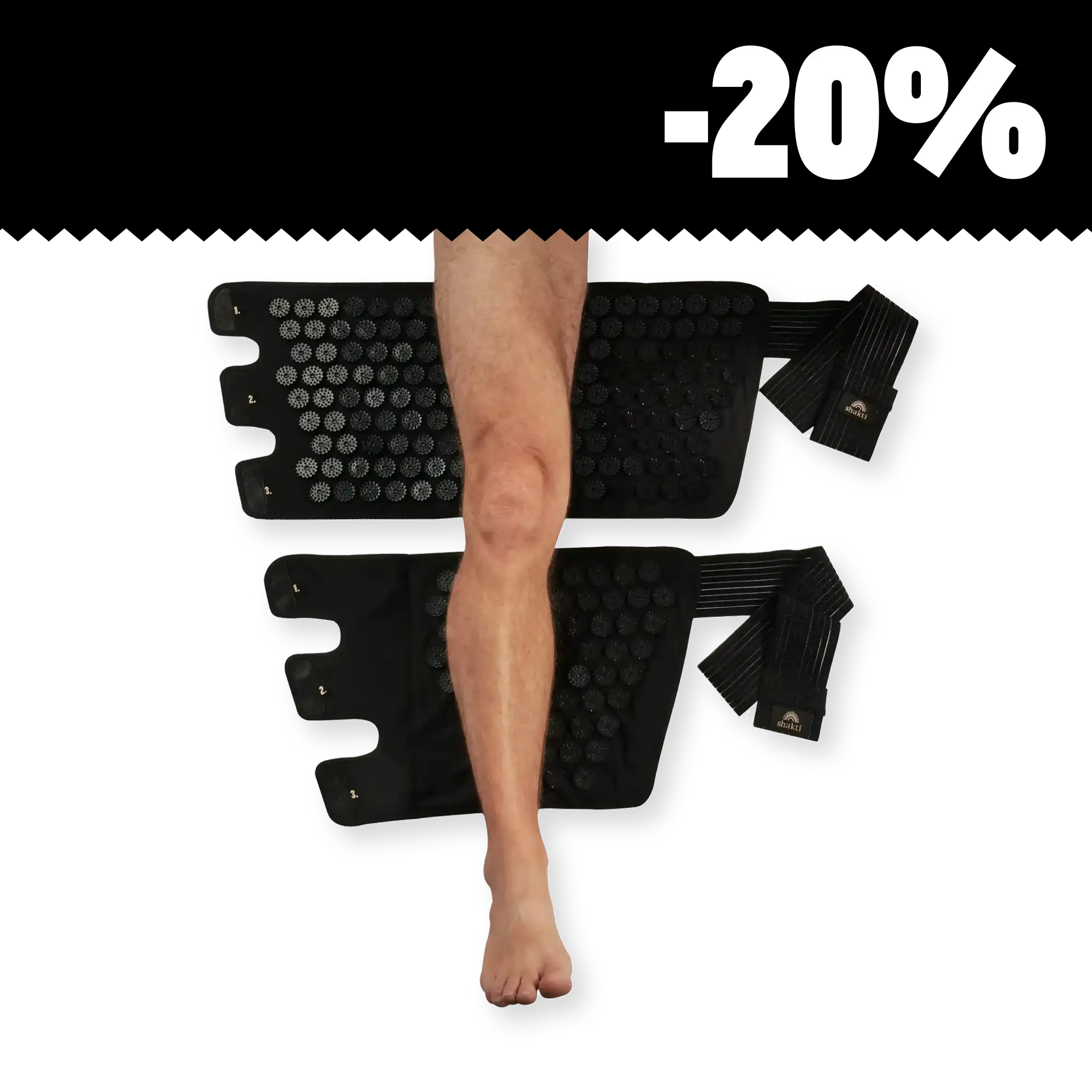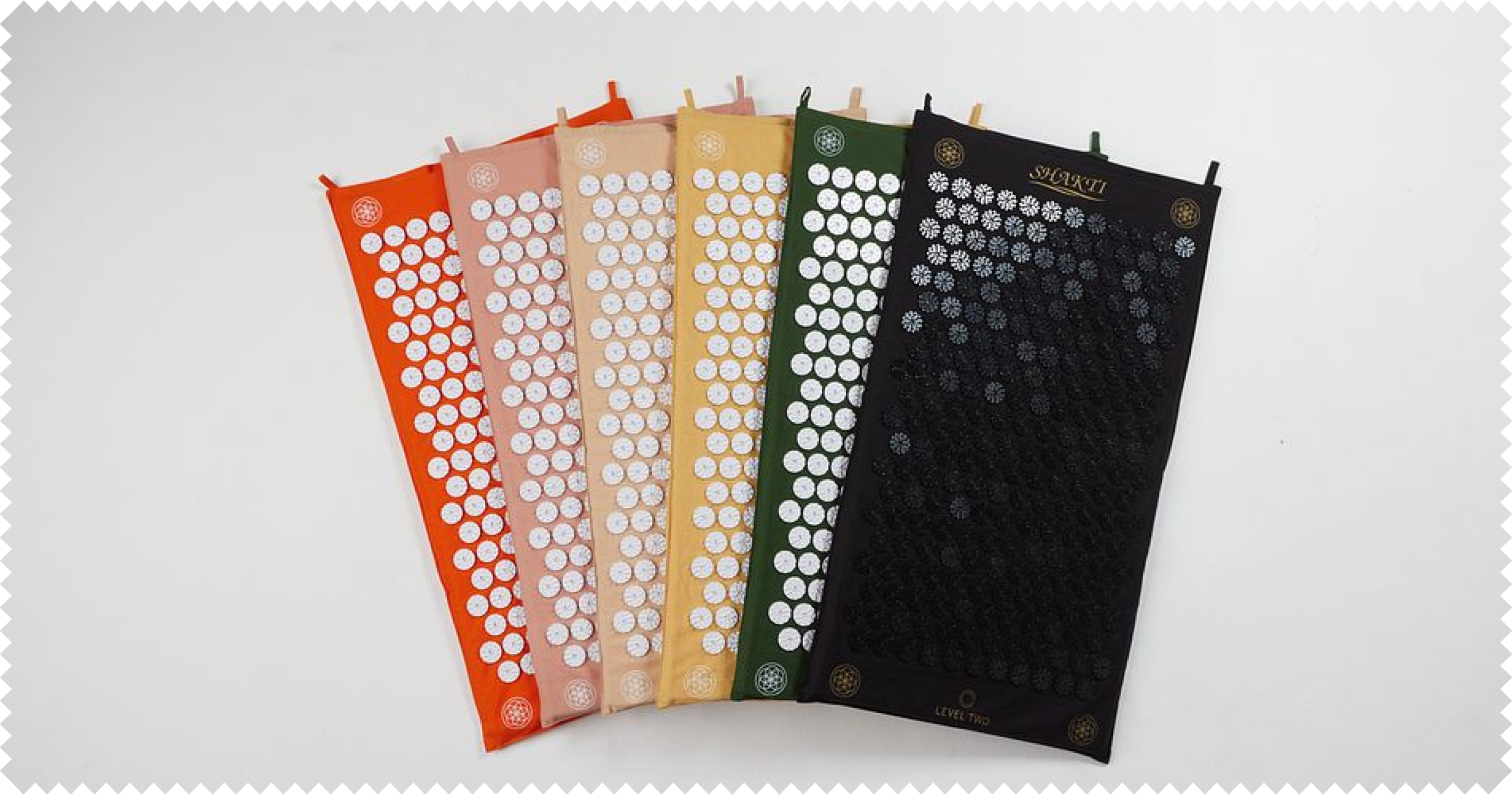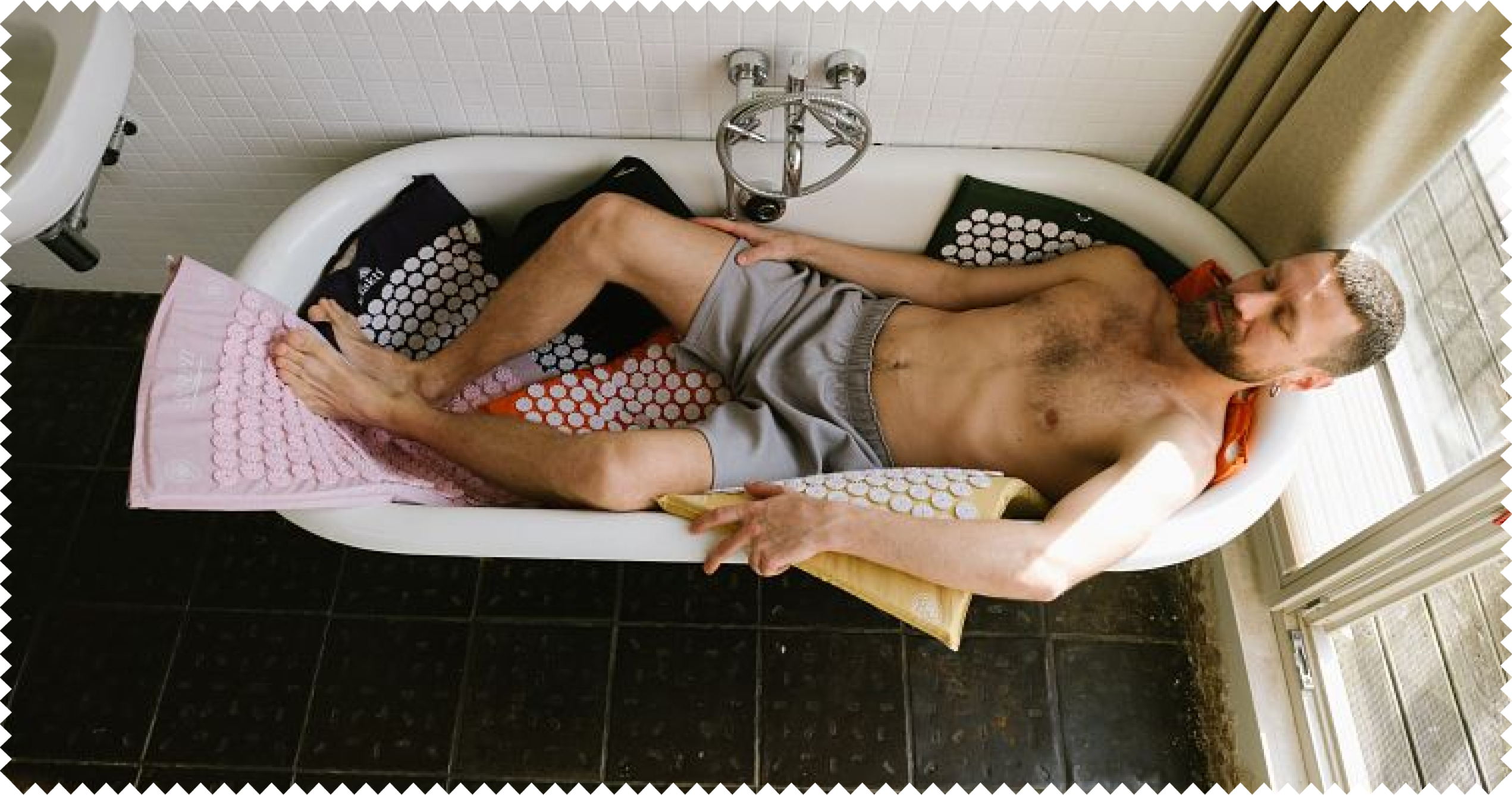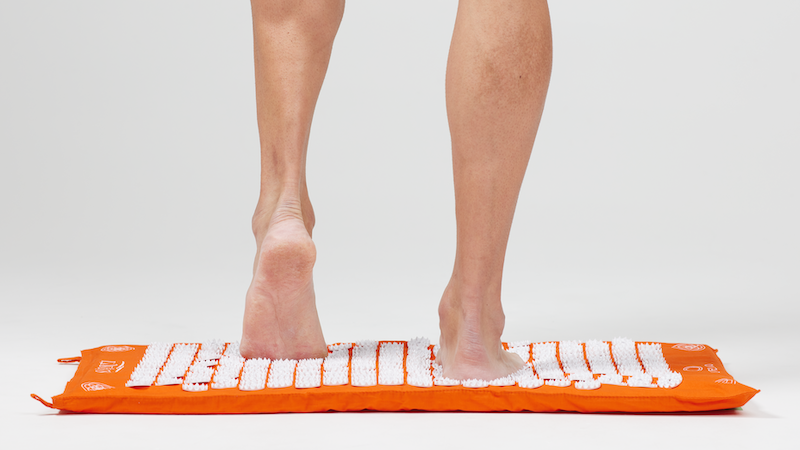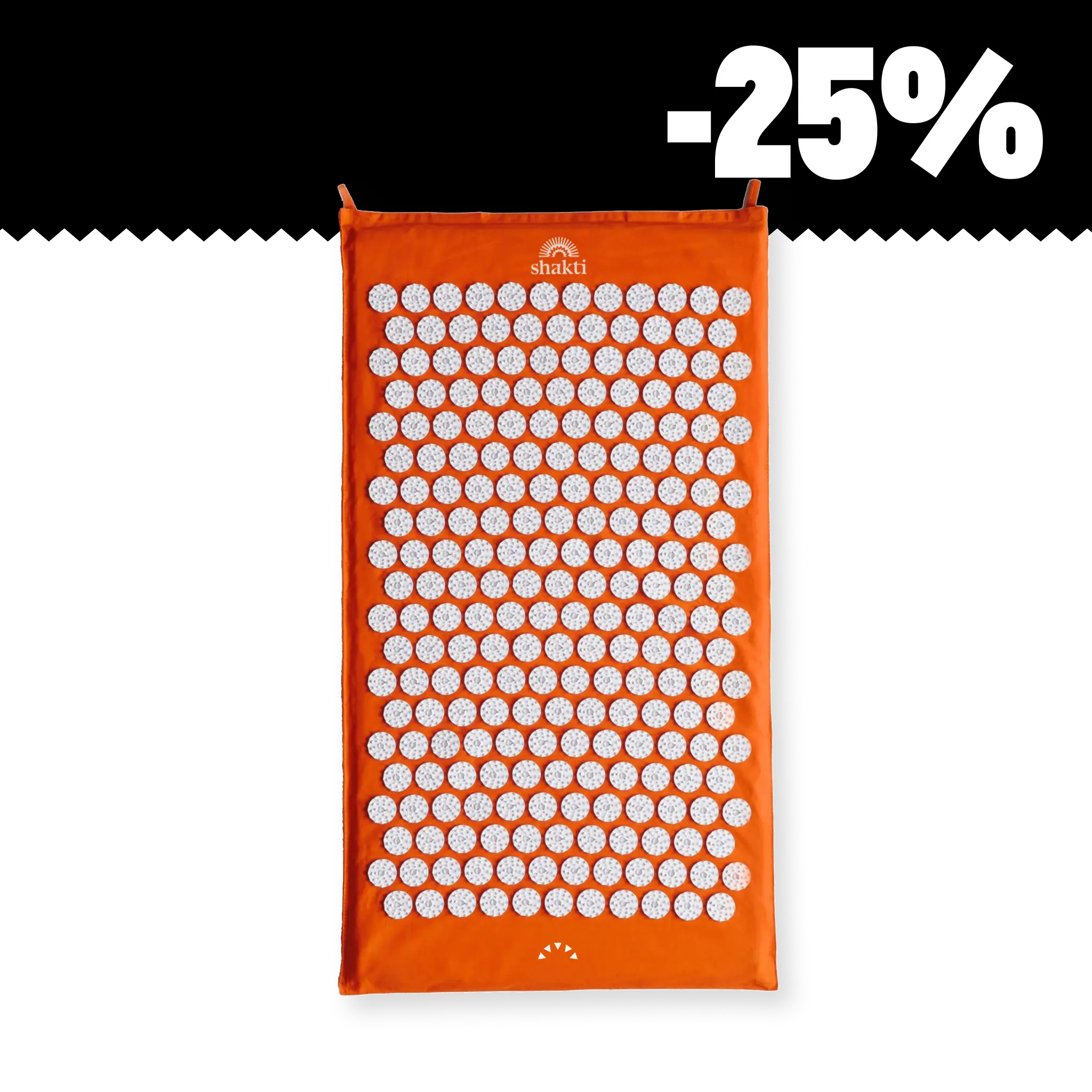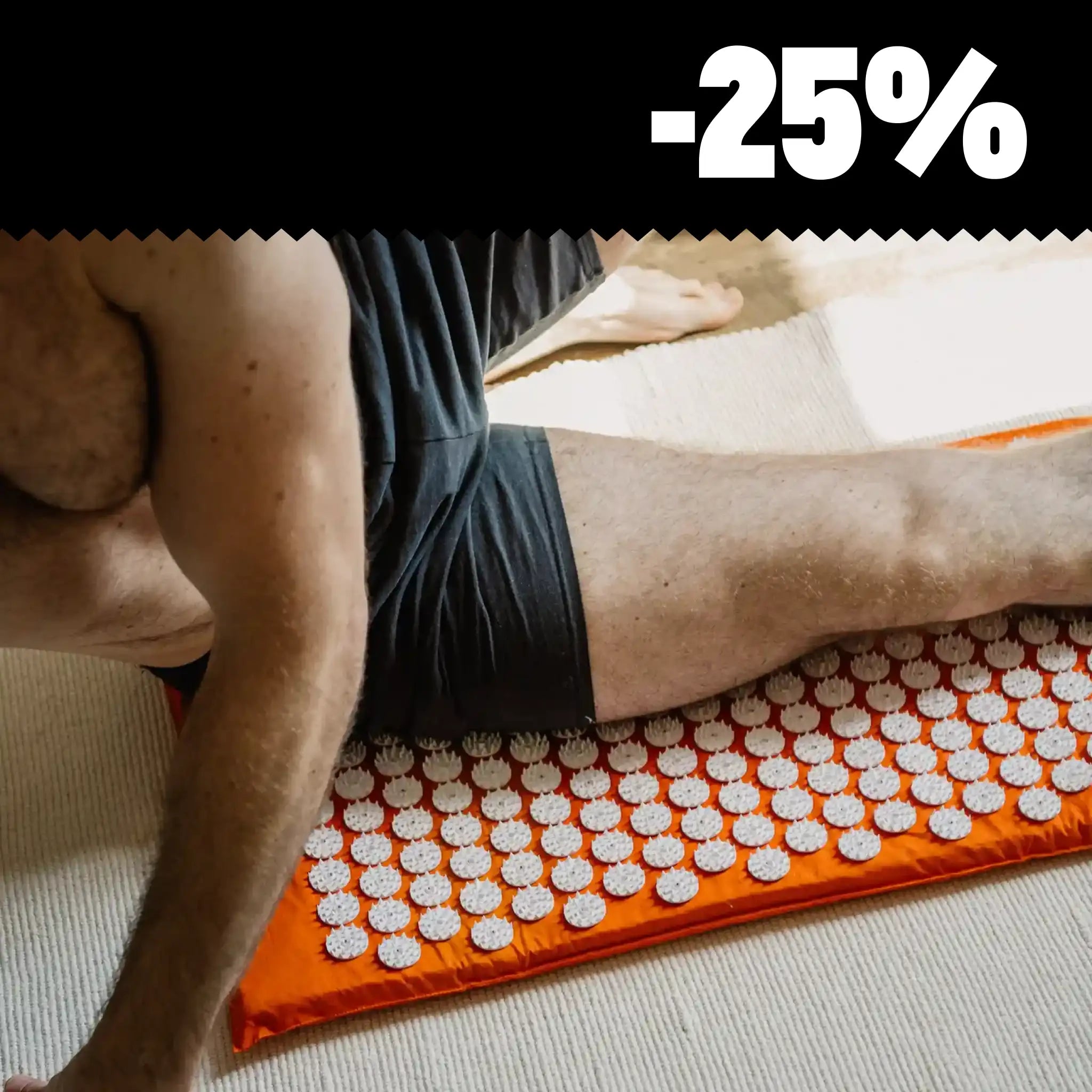Have you probably heard of the so-called foot reflex zones? Or have you ever marveled at the positive effect of a relaxing foot massage? There's more to our feet than meets the eye: 52 bones, over 200 ligaments and tendons and 60 muscles - plus numerous nerve endings and sensors that are connected to the entire body. From the very first step, your feet carry you through life, allow you to walk, provide balance and shock absorption. However, if you look at the technology of the foot reflex zones, there is much more to them that you can make use of for yourself and your well-being.
For many centuries, the reflexive connections between the feet and the organs have been used by healers to treat complaints in an alternative way. William Fitzgerald gave this form of treatment a name and guidelines in the form of foot reflexology, which is still becoming increasingly well-known today. The idea behind it: Targeted massages of individual points on the feet should trigger healing impulses throughout the entire body. We will show you the theoretical basis of reflexology, which points can be important for you during foot reflexology massage and how you can use the techniques to improve your general well-being.
Content
1. the foot reflex zones - special points under your feet
2 What are the foot reflex zones?
3. foot reflexology - application & effect for your well-being
4. can foot reflexology be used to recognize illnesses?
The foot reflex zones - special points under your feet
Foot reflexology is a practice based on the assumption that there is a special connection between specific areas on the feet and the general well-being of the human body. In Far Eastern countries in particular, massage techniques for treating these points have been known for thousands of years, for example in traditional Chinese medicine. Nowadays, massage is mainly used by alternative practitioners, physiotherapists and masseurs. In the USA, the physician Dr. William Fitzgerald presented new findings with his reflex zone therapy, which are still widely used today. As you can see, reflexology has long been used by people to alleviate physical and psychological problems.
Foot reflexology according to Fitzgerald
The development of zone therapy by William Fitzgerald formed the basis for modern foot reflexology and gave the method a system.
The basic assumption:
If the reflex zones on the feet are targeted by massage, this can trigger healing impulses throughout the body. For this purpose, different organs are assigned to the areas on the feet with which they are connected.
In foot reflexology, the human body is divided into ten zones that run vertically through the body and end in certain areas of the feet. Each zone therefore has a connection to a specific organ or function of the body. In a sense, the feet are a mirror image of the organism. If the corresponding points are treated in a targeted manner, local complaints on the feet can be alleviated and healing impulses sent to the corresponding areas of the body.
Note: This form of treatment has not been scientifically proven and is still the subject of debate. Many people report positive experiences, such as relief from headaches or improved digestion. Based on such reports, the treatment of the foot reflex zones can have many benefits. The best thing to do is to try out the method for yourself and get your own personal impression of its effects.

What are the foot reflex zones?
According to this treatment concept, the human body is embedded in a complex system of reflex pathways that are interconnected. The pathways end in the feet, where they are accessible via the skin surface. The sole of the foot is divided into different zones, which in turn represent the specific organs and areas of the body. But which foot reflex zones and points are located where?
The transverse zones with the most important foot reflex zones
The feet can be divided into three transverse zones, each of which is assigned to a different part of the body:
The top transverse zone from the tips of the toes to the joints to the balls of the feet reflects the head and neck area.
The second of the transverse zones extends from the ball of the foot to the metatarsus and includes the foot reflex zones for organs such as the lungs and heart as well as the area around the upper abdomen.
In the third area, from the midfoot to the heel, the reflex zones have a connection to the organs in the lower abdomen and the pelvis.
We have some examples of foot reflex zones from the left foot and the right foot:
- The points for the teeth and sinus are located below the tip of the middle toe.
- The foot reflex zones, which represent the ears, are located in the joint of the two outermost toes.
- A prominent point is located in the area of the tips of the toes, which is traditionally associated with the head and in particular with the sensory organs.
- The foot reflex zones for the stomach are located on the inside under the arch of the foot at the level of the metatarsal joints.
- Another interesting point is located on the forefoot in the area of the ball of the foot. This is associated with the chest organs such as the lungs and heart.
- For the intestinal area, the foot reflex zones are located between the beginning of the heel and the metatarsal joints.
- The corresponding foot reflex zones for blister treatment are located on the inside of both feet at the start of the heel.
- The point for the heart is located below the joint of the big ten on the ball of the foot.
- The reflex zones representing the lungs are located on both sides of the ball of the foot.
There are also foot reflex zones on the back of the feet, but the points below the feet are usually targeted during a massage.
You can now find very detailed maps online that show the exact location of the foot reflex zones for individual organs. If you want to do yourself some good with a massage, take a look at these precise illustrations beforehand, as they provide you with an ideal guide for the foot reflexology massage.
Foot reflexology - application & effect for your well-being
The targeted stimulation of the reflexology points under the feet is intended to promote health. This form of massage is very different from conventional massage: It is not primarily about relieving tension in the muscle tissue, but about promoting the body's own healing processes.
Different techniques are used in foot reflexology, namely the
- Paint
- Kneading and
- Press
of the foot reflex zones and points. The massage promotes blood circulation and metabolism in the corresponding area. Self-massage of the reflex zones is not so easy because you have to sit cross-legged for a long time - after all, you have to be able to reach the sole of your feet with your hands. Apart from that, it's hard on the fingers to massage the corresponding reflex zones on the right foot and the left foot evenly.
So you can try out the foot reflexology massage for yourself:
Start the massage on your right foot and work systematically through the different zones: from the toes, which represent areas such as the head and neck, to the midfoot, which is connected to organs such as the heart and lungs, to the heel, which represents areas of the lower back and lower spine. Then repeat this process on the left foot and feel the sensations and effects. Even a short massage of 10 to 15 minutes can have significant positive effects on your well-being. Reflexology is therefore ideal as a relaxing ritual at the end of the day or as an energizing break during the day.
Tip: If you want a really effective and extensive massage of the reflex zones, you should ideally consult a professional.

Stimulate foot reflex zones with aids: Acupressure mat, foot massagers & more
Instead of laboriously massaging your feet yourself, you can achieve a similar effect to a foot reflexology massage with a few aids. These products target the points as a whole and can easily be used in everyday life:
- Acupressure mat: An acupressure mat has many small spikes that use the pressure of your own body weight to promote blood circulation in the skin and the underlying muscle areas. These mats are ideal for targeting the foot reflex zones. At ShaktiMat, we even offer you an acupressure mat especially for the feet that you can easily take with you on the go. As well as having a positive effect on the reflex zones, it also treats the muscles in your feet - like a pleasant foot massage. This means more energy and deeper relaxation for your feet.
- Foot massagers: You have probably already seen these devices, which usually consist of several wooden rollers with tips in a frame. The wooden devices are placed on the floor and you roll over the tips with the soles of your feet. This gently stimulates the foot reflex zones. It is important to work with sufficient pressure.
- Massage boards: You can find various massage boards online that are fitted with stones or wooden hemispheres. These are arranged as an image of the feet and the foot reflex zones. If you place your feet on them, the stones stimulate the corresponding points very directly.
Which tool is best suited for your foot reflexology massage depends entirely on your preference. Basically, massage boards with pre-arranged massage points offer very direct stimulation of the points - but the rest of the feet remain untouched. An acupressure mat, on the other hand, offers you an overarching effect and is also a fabulous remedy for tired feet.
Can foot reflexology be used to recognize illnesses?
In the discussion about foot reflexology and its importance for health, the question regularly arises as to what extent this practice can contribute not only to the treatment, but also to the detection of diseases. It is a fascinating idea that the feet - which carry us through life - could possibly also provide early indications of health inconsistencies. In the context of reflexology, such possibilities are carefully considered in order to fully exploit their therapeutic potential. Practitioners of reflexology often report that certain sensitivities or abnormalities in the reflex zones can indicate disharmony or disorders in the corresponding organs or body systems. These include pain in the foot reflex zones and points. For example, increased sensitivity or even pain in a zone representing the stomach can be a signal of digestive problems or an impending illness in this area. Could such conspicuous signs in the foot reflex zones actually serve to identify health problems before they become fully apparent?
The reflex zones have significance for many in terms of their connections throughout the body. Nevertheless, they are not scientifically proven and this form of therapy is not a diagnostic procedure. If you suffer from health problems, you should therefore have them checked out by a specialist.
However, massaging the reflex points can of course contribute to a better feeling for your own body. Self-care and good body awareness can help you to react more attentively to problems and recognize warning signals more quickly. In addition, the regular use of foot reflexology has the potential to promote well-being and serve as a preventative measure to support the body's balance. The practice of foot reflexology therefore proves to be a fascinating addition to the spectrum of health care. It combines the traditional wisdom of millennia-old healing methods with modern aspirations for holistic health and well-being. While foot-based reflexology may not be able to directly diagnose disease, it offers a unique insight into the deep interconnectedness of our bodies and intuitively supports the harmony and health of the whole organism.


